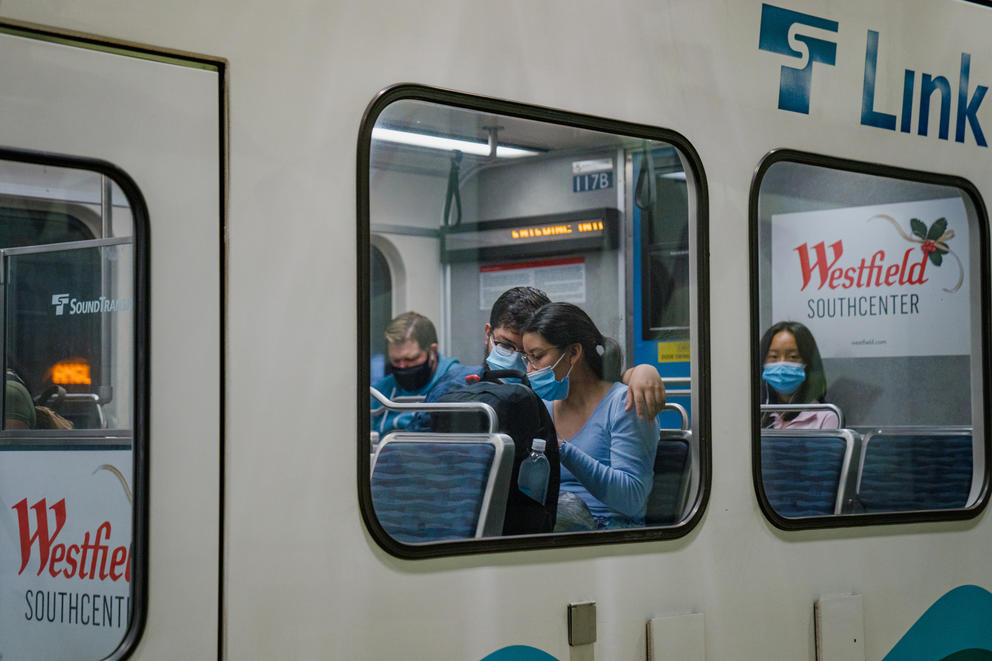If you’re confused about where we are in the pandemic — and where we’re headed — you’re not alone. This is a deeply weird time, neither the roaring ’20s we were promised would start after the vaccine became available, nor the misery of last year, when many of us remained all but airlocked in our homes.
And if like me, you’re feeling a bit adrift, maybe what you’re craving is some honesty. Well, here it is: This is going to last a long time. It hurts me to say it, and I didn’t want to admit it, even to myself until now, but it’s time to start thinking of COVID-19 as a constant battle that will eventually wane, rather than an obstacle we’re going to speedily surmount.
From the beginning, if you were reading in-depth health reporting, you knew that public health officials were in part telling us what we needed to hear to get through a fortnight first, then the next few months, then the next year. “Two weeks to stop the spread” gave way to excitement at the reported efficacy rates of the vaccines, which ultimately turned into a heroic push to get enough of the population inoculated ASAP.
What was clear all along was that two-week lockdowns in the United States came too late to stop community transmission in its tracks — and that vaccine hesitancy in this country was going to be too big a problem for us to solve quickly enough to reach herd immunity through jabs alone. I don’t feel betrayed by public health experts — they had a job to do, and I’m not sure if I would have made it through 2020 if I didn’t feel like I could reach the carrot at the end of the stick if I just ran a little longer.
But now that we’re all collectively washing out into this weird languor, I do just want it told to me straight. Because right now, in August 2021, what you know if you’re reading that same in-depth health reporting, is that COVID-19 is almost certainly going to become endemic, a long-circulating fixture in the landscape of disease.
A survey of immunologists conducted by Nature, the premier academic journal, for example, found that nearly 90% of respondents expected COVID-19 to become endemic. An extensively researched Atlantic article, published in the middle of the delta surge, came to a similar conclusion in its headline: “The Coronavirus Is Here Forever.”
That is admittedly hard to hear, but it’s true. It seems likely that variants will evade vaccines, boosters will get distributed, and the virus will ebb and flow for quite some time. But it also means we need to start hearing some better messages about this new reality — not fatalistic ones that ignore the near-miraculous vaccines, but pragmatic ones that prepare us to cope and help us give a shape to our current uncertainty.
“It’s true that COVID-19 may be with us in some form for longer than we had hoped or anticipated,” a spokesperson with Public Health — Seattle & King County told me when I asked how we can start preparing mentally for the possibility of COVID becoming endemic. “We may have to incorporate some new habits, but it doesn’t have to constantly turn our lives upside down.”
At the same time, the spokesperson made it clear in their statement that “we still need to treat COVID-19 as an emergency,” given the current burden on hospital intensive care units, the continuing spread of the delta variant and the lower levels of vaccination in parts of our community. Accepting that COVID could be an unwanted presence in our lives for the foreseeable future doesn’t mean giving up on our current tactics: masks, ventilation and, most importantly, vaccines, vaccines, vaccines.
“Broad vaccine coverage, along with those other prevention methods, are the way to get the levels of circulating virus down to the point where life can return to something like normalcy,” the spokesperson told me.
My fear, though, is about our ability to adjust to something like normalcy as opposed to just normalcy. The same conscientiousness and informed hypervigilance that made many Washingtonians so good at keeping our COVID-19 death rate relatively low could, in the end, make it harder for us to adjust to an endemic future.
It will be a less sudden, but similar version of a struggle already happening elsewhere in the world: Many countries that pursued a “zero-COVID” strategy, like Singapore and Australia, are currently grappling with the reality that the delta variant is too wily to contain with anything other than absolute lockdown.
For me — a thirtysomething with a heart condition — it will mean doing some strange but necessary risk arithmetic: Psychologically, I can’t go back to sheltering in place again, but I’ll probably avoid indoor crowds for a time, and maybe I’ll still eat indoors sometimes at restaurants that are requiring proof of vaccination. It also means accepting that I could get COVID-19 — the very thing I have spent over a year avoiding like it was my job — and trusting in a vaccine that would likely save my life.
This thing is going to last a long time. But we can at least start to name and define this period of uncertainty, so that it starts to feel like 2021, instead of a blend of years past.




